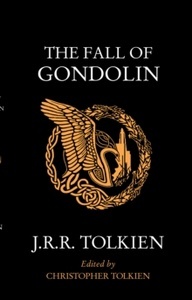The Fall of Gondolin

Editorial Harper Collins USA
Fecha de edición mayo 2022 · Edición nº 1
Idioma inglés
EAN 9780008503970
Libro
encuadernado en tapa blanda
Dimensiones 111 mm x 177 mm
Resumen del libro
Painstakingly restored from Tolkien's manuscripts and presented for the first time as a standalone work, the epic tale of The Fall of Gondolin will reunite fans of The Hobbit and The Lord of the Rings with Elves and Men, Balrogs, Dragons and Orcs and the rich landscape and creatures unique to Tolkien's Middle-earth.In the Tale of The Fall of Gondolin are two of the greatest powers in the world. There is Morgoth of the uttermost evil, unseen in this story but ruling over a vast military power from his fortress of Angband. Deeply opposed to Morgoth is Ulmo, second in might only to Manwe, chief of the Valar.Central to this enmity of the gods is the city of Gondolin, beautiful but undiscoverable.
It was built and peopled by Noldorin Elves who, when they dwelt in Valinor, the land of the gods, rebelled against their rule and fled to Middle-earth. Turgon King of Gondolin is hated and feared above all his enemies by Morgoth, who seeks in vain to discover the marvellously hidden city, while the gods in Valinor in heated debate largely refuse to intervene in support of Ulmo's desires and designs.Into this world comes Tuor, cousin of Turin, the instrument of Ulmo's designs. Guided unseen by him Tuor sets out from the land of his birth on the fearful journey to Gondolin, and in one of the most arresting moments in the history of Middle-earth the sea-god himself appears to him, rising out of the ocean in the midst of a storm.
In Gondolin he becomes great; he is wedded to Idril, Turgon's daughter, and their son is Earendel, whose birth and profound importance in days to come is foreseen by Ulmo.At last comes the terrible ending. Morgoth learns through an act of supreme treachery all that he needs to mount a devastating attack on the city, with Balrogs and dragons and numberless Orcs. After a minutely observed account of the fall of Gondolin, the tale ends with the escape of Tuor and Idril, with the child Earendel, looking back from a cleft in the mountains as they flee southward, at the blazing wreckage of their city.
They were journeying into a new story, the Tale of Earendel, which Tolkien never wrote, but which is sketched out in this book from other sources.Following his presentation of Beren and Luthien Christopher Tolkien has used the same 'history in sequence' mode in the writing of this edition of The Fall of Gondolin. In the words of J.R.R. Tolkien, it was 'the first real story of this imaginary world' and, together with Beren and Luthien and The Children of Hurin, he regarded it as one of the three 'Great Tales' of the Elder Days.
Biografía del autor
John Ronald Reuel Tolkien nació el 3 de enero en Bloemfontein en el Estado Libre de Orange. A principios de 1895, su madre, agotada por el clima, regresó a Inglaterra con Ronald y su hermano pequeño, Hilary. Tras el fallecimiento de su padre, a causa de unas fiebres reumáticas, él y su familia se establecieron brevemente en Sarehole, cerca de Birmingham. Esta hermosa zona rural causó una honda impresión en el joven Ronald, y sus efectos pueden verse en su escritura y en algunos de sus cuadros. Mabel falleció en 1904, y los hijos quedaron a cargo del padre Francis Morgan, un sacerdote del Oratorio de Birmingham. En el King Edwardx{0026} x02019;s School, Ronald desarrolló su amor por las lenguas; más adelante inventaría sus propios idiomas. También por esta época conoció a Edith Bratt, con quien se casó en 1916. Cuando estalló la primera guerra mundial en 1914, Ronald era todavía un estudiante en Oxford. Se graduó al año siguiente, con un sobresaliente en Inglés y poco después fue enrolado como teniente en los Lancashire Fusiliers. En 1916 combatió en la batalla del Somme, pero cayó víctima de la fiebre de las trincheras y fue devuelto a casa como no apto para el servicio. Tolkien fue uno de los mejores filólogos de su época y gran parte de su vida laboral transcurrió en Oxford, primero como profesor de anglosajón y luego como profesor de lengua inglesa y literatura. Al mismo tiempo, en privado, trabajaba en el gran ciclo de mitos y leyendas que más adelante se publicaría con el título de El Silmarillion. Edith y él tuvieron cuatro hijos, y en parte fue para ellos por lo que escribió el cuento El Hobbit, publicado por Allen x{0026}amp; Unwin en 1937. Tuvo tanto éxito que el editor quiso tener en seguida una secuela, pero no fue hasta 1954 que apareció el primer volumen de la obra maestra de Tolkien, El Señor de los Anillos, con un éxito inmediato. Su enorme popularidad sorprendió a Tolkien. Ronald y Edith Tolkien se mudaron a Bournemouth al llegar a la vejez, pero cuando Edith murió en 1971, Tolkien regresó a Oxford. Ronald Tolkien falleció el 2 de septiembre de 1973, tras una breve enfermedad.








